
Roots
The quiet hours of slumber, a time when the world softens its edges and the body seeks restoration, hold a profound, often underestimated, influence on the vitality of our hair. For those blessed with the wondrous textures of coils, curls, and waves, the night is not merely a pause in daily activity; it is a canvas where the delicate dance of moisture balance plays out, shaping the very resilience and luster of our strands. Understanding this nightly ballet, the subtle exchanges between our hair and its environment as we rest, is the first step toward cultivating truly flourishing hair. It beckons us to look beyond surface-level concerns and delve into the very essence of what keeps our hair vibrant, pliable, and strong through the dawn.

The Hair’s Thirst Underneath
At its core, hair, particularly textured hair, possesses a unique architecture that influences its interaction with water. The outermost layer, the cuticle, resembles overlapping shingles on a roof. In straight hair, these shingles lie relatively flat, providing a smooth surface that resists moisture loss.
However, with the characteristic bends and twists of textured strands, these cuticles often stand slightly raised, creating more opportunities for moisture to escape. This inherent structural quality means that textured hair often possesses a natural inclination toward dryness, making its hydration a constant, conscious consideration.
The journey of water within the hair shaft is a complex one. Hair fibers are hygroscopic, meaning they readily absorb and release water vapor from the surrounding atmosphere. This absorption and desorption are dynamic processes, constantly seeking equilibrium with the ambient humidity.
During the day, our hair contends with environmental stressors, styling, and the general ebb and flow of daily life. At night, however, a different set of conditions takes hold, conditions that can either replenish or further deplete the hair’s precious internal water reserves.
Hair’s inherent structure dictates its dynamic interaction with environmental moisture, a nightly process influencing its long-term health.

Cuticle Dynamics in the Dark
The cuticle, that protective outer shield, is remarkably responsive to its surroundings. When hair is wet, the cuticles swell and lift slightly, allowing water to penetrate the cortex. As hair dries, they ideally flatten again, sealing the moisture within. Yet, during sleep, hair is subjected to mechanical friction against pillows and bedding.
This friction, even against seemingly soft materials, can cause the cuticles to abrade and lift, creating pathways for internal moisture to dissipate into the air. This microscopic disruption, though invisible to the naked eye, contributes significantly to overnight dryness and subsequent frizz or breakage.
Consider the cumulative effect of this nightly abrasion. Over hours, as we shift and turn, our hair fibers are constantly rubbing against surfaces. This mechanical stress can be particularly taxing on textured hair, which, due to its curvilinear shape, already has more points of contact and potential friction. A well-hydrated strand with intact cuticles is more resilient to these forces, but a dry strand with already compromised cuticles becomes even more susceptible to damage, creating a cycle of increasing vulnerability.
The internal water content of the hair fiber also influences its mechanical properties. Hair that is well-hydrated is more elastic and pliable, less prone to snapping or breaking under stress. Conversely, dry hair becomes stiff and brittle, making it more vulnerable to the mechanical forces it encounters during sleep. Thus, maintaining optimal moisture levels is not just about softness or appearance; it is a fundamental aspect of the hair fiber’s structural integrity and its capacity to withstand the rigors of nightly rest.
- Hair Porosity ❉ Refers to the hair’s capacity to absorb and hold moisture, directly influenced by cuticle condition.
- Hair Elasticity ❉ Describes the hair’s ability to stretch and return to its original shape without breaking, highly dependent on internal moisture.
- Hair Strength ❉ The hair’s resistance to breakage under tension, a quality diminished by dehydration and cuticle damage.
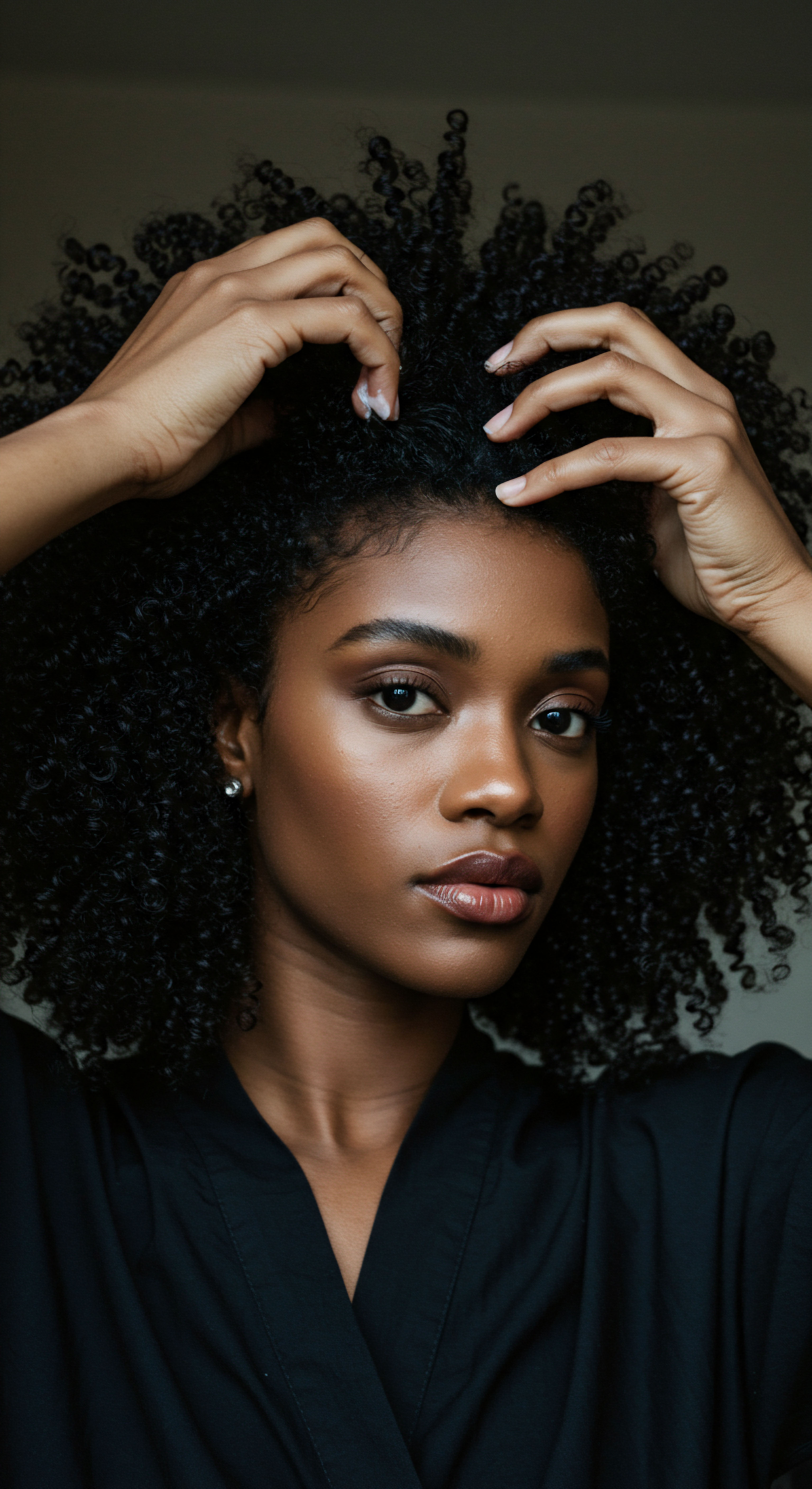
Ritual
As the sun dips below the horizon and the day’s demands recede, a quiet invitation arises to engage with our hair in ways that honor its unique needs. This segment shifts from the foundational understanding of hair’s intrinsic thirst to the deliberate practices that can transform nightly rest into a profound period of restoration. It is here, in the realm of mindful routine, that we begin to shape the environment for our strands, moving beyond passive observation to active guardianship of their moisture equilibrium. This journey into ritual acknowledges that true hair well-being is not merely about products, but about consistent, gentle attentiveness.

Preparing Hair for Slumber
The preparation of hair before sleep forms the cornerstone of effective overnight moisture care. Just as one might prepare a garden bed for the morning’s dew, so too must we prepare our hair for the restorative quiet of the night. This preparation often begins with ensuring the hair is adequately moisturized before protective measures are applied. A light application of a water-based leave-in conditioner or a botanical oil can provide a sustained release of hydration throughout the hours of rest, acting as a barrier against moisture loss.
The choice of product matters significantly. Opting for formulations that prioritize humectants, like glycerin or hyaluronic acid, can draw moisture from the air into the hair, especially in environments with adequate humidity. However, in very dry climates, these ingredients can sometimes draw moisture out of the hair, necessitating a different approach.
Emollients and occlusives, such as shea butter or jojoba oil, create a protective seal around the hair shaft, slowing down the rate of water evaporation. The interplay of these ingredients, tailored to individual hair needs and local climate, is a nuanced consideration.

Protective Styling Through the Night
The concept of protective styling at night is not merely about preserving a daytime style; it is a strategic defense against mechanical damage and environmental dehydration. Styles such as loose braids, twists, or pineapple buns serve to consolidate the hair, minimizing its exposure to friction against bedding. By containing the strands, these styles reduce the surface area available for direct contact with abrasive fabrics, thereby preserving the integrity of the cuticle layer and, consequently, the hair’s internal moisture.
Consider the contrast ❉ loose hair spread across a cotton pillowcase, subject to constant rubbing and tangling with every turn, versus hair gently gathered into a single, loose braid, its surface contact dramatically reduced. This simple act of gathering the hair can prevent a cascade of issues, from friction-induced frizz to tangles that necessitate aggressive detangling in the morning, further compromising the hair’s delicate structure.
Nightly protective styling minimizes friction and preserves the hair’s structural integrity, a silent guardian of its moisture.
| Style Loose Braid(s) |
| Primary Benefit Minimizes tangling, reduces friction |
| Moisture Impact Helps seal in applied products, slows evaporation |
| Style Pineapple/High Puff |
| Primary Benefit Keeps hair off neck/shoulders, preserves curl pattern |
| Moisture Impact Concentrates hair mass, less surface area for moisture loss |
| Style Twists |
| Primary Benefit Elongates curls, reduces shrinkage, minimizes friction |
| Moisture Impact Excellent for product distribution and sealing moisture |
| Style Bantu Knots |
| Primary Benefit Creates defined curls without heat |
| Moisture Impact Keeps hair fully contained, maximizing moisture retention |
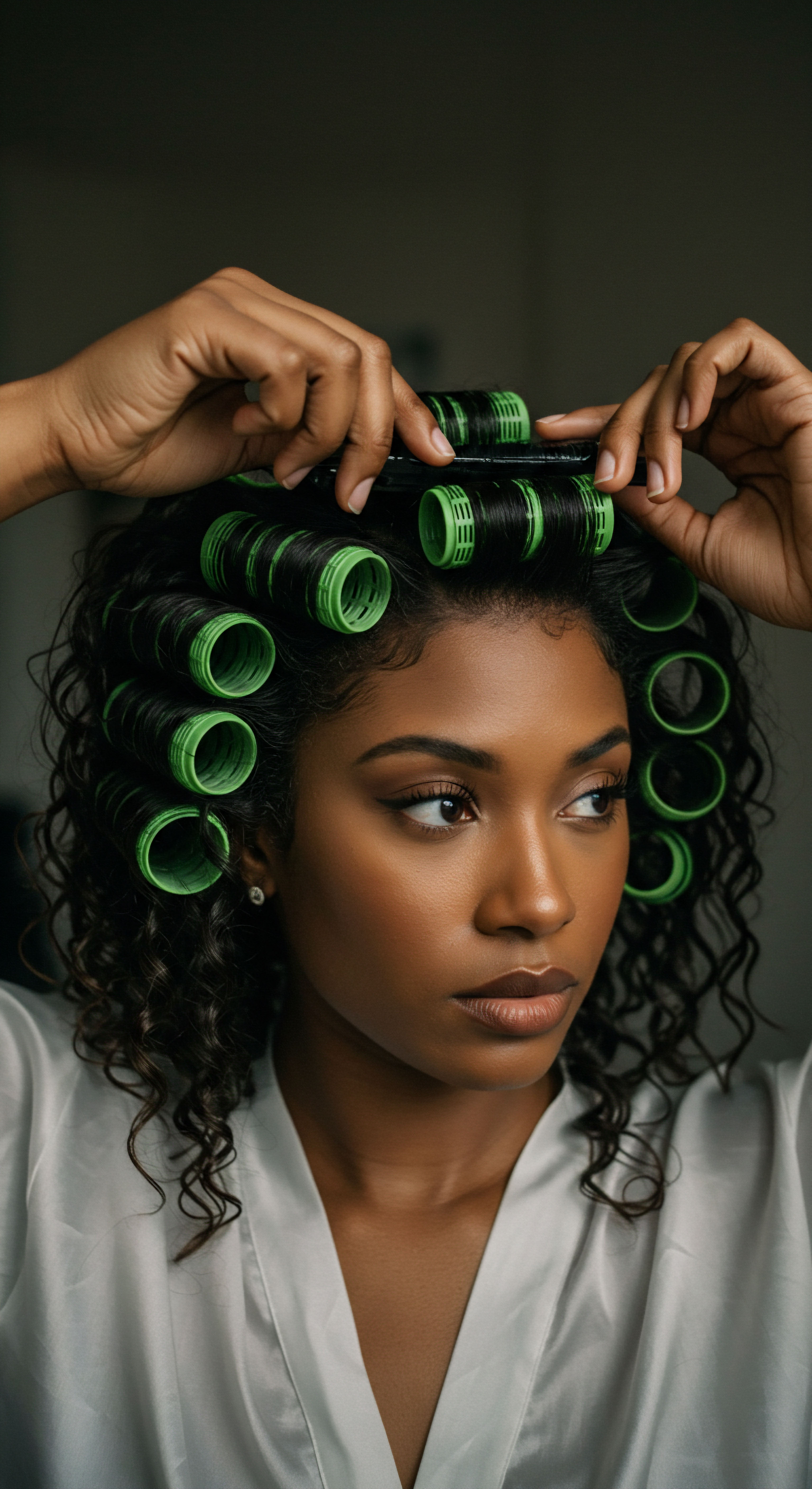
The Sanctuary of Sleep Accessories
The choice of sleep accessories stands as a powerful, yet often overlooked, component in the nightly moisture equation. Traditional cotton pillowcases, while comfortable for skin, are notoriously absorbent and possess a rougher fiber surface. They can wick moisture directly from the hair and create significant friction, leading to cuticle damage, frizz, and dryness.
This is where the wisdom of silk and satin bonnets or pillowcases truly shines. Unlike cotton, these materials possess a smooth, tightly woven surface that creates minimal friction against the hair shaft. This reduced friction means less cuticle lifting and less mechanical damage, allowing the hair’s natural moisture, or any applied products, to remain within the strands.
Furthermore, silk and satin are less absorbent than cotton, meaning they do not actively draw moisture from the hair. They allow the hair to retain its hydration, creating a more stable, moisture-rich environment throughout the night.
The difference can be profound. Waking up with hair that feels softer, less tangled, and more hydrated is a direct testament to the efficacy of these materials. For many with textured hair, a silk or satin bonnet becomes more than an accessory; it becomes a non-negotiable tool for maintaining hair health and preserving the integrity of their nighttime care rituals.
- Silk Bonnets ❉ Offer superior smoothness and breathability, creating a gentle cocoon for strands.
- Satin Pillowcases ❉ A convenient alternative to bonnets, providing a low-friction surface for resting hair.
- Hair Scarves ❉ Versatile options for wrapping hair securely, offering similar benefits to bonnets when made of silk or satin.

Relay
Beyond the immediate tactile experience of hair care, a deeper understanding of moisture balance at night calls us to consider the intricate interplay of biological realities, environmental dynamics, and even the echoes of ancestral wisdom. This exploration moves beyond simple steps, inviting us to peer into the microscopic world of hair fibers and the broader context of our wellness, recognizing that the health of our strands is inextricably linked to the unseen forces at play during our rest.

The Tribological Truth of Overnight Hair
The physical interaction between hair and bedding surfaces is far more complex than a mere “rub.” It involves the science of tribology, the study of friction, lubrication, and wear. Each time our head shifts on a pillow, hair fibers experience micro-abrasions. For textured hair, with its inherent twists and turns, the points of contact and the potential for friction are amplified. This constant mechanical stress, even against seemingly soft materials, can progressively lift and damage the hair’s delicate cuticle layer.
Research in the field of cosmetic science has illuminated these subtle, yet cumulative, effects. For instance, studies examining the frictional properties of various textiles against human hair fibers reveal significant differences. While cotton fibers, with their irregular surface and high absorbency, can generate considerable friction and strip moisture, smoother, less absorbent materials like silk exhibit remarkably lower coefficients of friction.
A paper by Kocher and Bush (2015) on the tribology of human hair highlights how frictional forces directly influence cuticle integrity, underscoring that the choice of sleep surface is not merely a comfort preference but a critical factor in mitigating microscopic damage and subsequent moisture loss. This ongoing, subtle abrasion over hours directly compromises the hair’s ability to retain water, leading to the familiar morning feeling of dryness and brittleness.
Microscopic friction between hair and sleep surfaces significantly compromises cuticle integrity, leading to accelerated moisture loss.

How Does Environmental Humidity Influence Nighttime Hair?
The atmospheric humidity within our sleeping environment exerts a silent yet potent influence on our hair’s moisture content. Hair, as a hygroscopic material, constantly seeks equilibrium with the water vapor in the air. In a dry bedroom, especially during colder months when heating systems strip moisture from the air, hair will readily release its internal water into the drier surroundings. This phenomenon, known as desorption, means that even if hair is well-moisturized before bed, a parched environment can undo much of that effort.
Conversely, in highly humid environments, hair can absorb too much moisture, leading to hygral fatigue. While seemingly counterintuitive for moisture-seeking hair, excessive and rapid swelling and deswelling of the hair shaft can strain the internal protein structure, making the hair more prone to damage. This underscores the delicate balance required ❉ not too dry, not excessively wet. A humidifier in a dry climate can be a silent ally, gently raising the ambient humidity to a more hair-friendly level, thereby reducing the hair’s tendency to relinquish its precious internal water.
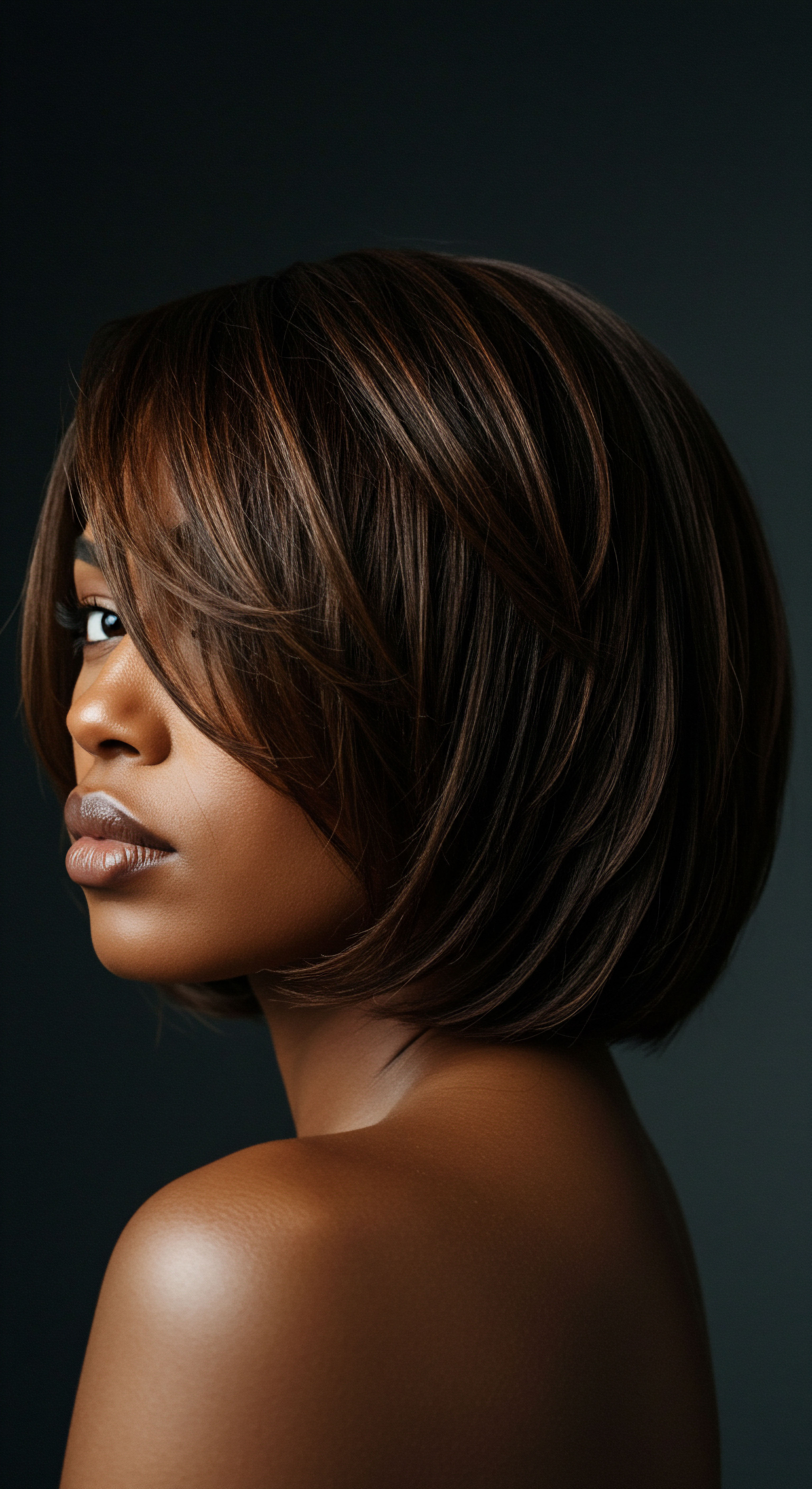
The Microbiome Connection in Hair Wellness
The scalp, a living ecosystem, hosts a complex community of microorganisms, collectively known as the scalp microbiome. While much attention is often paid to the hair shaft itself, the health of the scalp profoundly influences the quality of the hair that grows from it. Overnight, the scalp’s environment changes; it may become warmer, and natural oils (sebum) are produced. A balanced scalp microbiome contributes to a healthy scalp barrier, which in turn can influence the hydration levels of the skin and, indirectly, the hair follicles.
Disruptions to this microbial balance, perhaps due to harsh products or environmental factors, can lead to scalp irritation, dryness, or excessive oiliness, all of which can indirectly compromise hair health and its capacity to retain moisture. Gentle nighttime scalp massages, or the application of scalp serums designed to support microbial balance, can contribute to an optimal environment for hair growth and overall strand vitality, creating a holistic approach to moisture management that begins at the very root.
Consider, for instance, the role of specific microbial communities on the scalp. Certain bacteria and fungi naturally present can help regulate sebum production or produce beneficial compounds. When this delicate equilibrium is disturbed, perhaps by infrequent washing or by using products that strip the scalp of its natural defenses, the scalp barrier can weaken.
A compromised barrier can lead to increased transepidermal water loss from the scalp itself, potentially affecting the hydration of the hair follicles and the emerging hair strands. This highlights the interconnectedness of scalp health and hair moisture.
| Factor Low Humidity |
| Influence on Hair Increased hair desorption |
| Moisture Balance Effect Leads to dryness, brittleness |
| Factor High Humidity |
| Influence on Hair Increased hair absorption, hygral fatigue risk |
| Moisture Balance Effect Can cause swelling, protein strain |
| Factor Friction (Pillow) |
| Influence on Hair Cuticle lifting, mechanical damage |
| Moisture Balance Effect Accelerated moisture evaporation |
| Factor Scalp Health |
| Influence on Hair Influences follicle health, sebum production |
| Moisture Balance Effect Indirectly affects hair hydration from root |
The wisdom passed down through generations, often expressed in the quiet traditions of nighttime hair wrapping or oiling, finds its scientific grounding in these principles. Our ancestors intuitively understood the need to protect hair from the rigors of the night, even if they lacked the precise language of tribology or microbiology. Their practices, honed over centuries, served to mitigate friction and preserve the hair’s natural moisture, demonstrating a profound, lived understanding of hair’s needs. This confluence of historical practice and contemporary science paints a comprehensive picture of the profound influence moisture balance holds over our hair as we sleep.
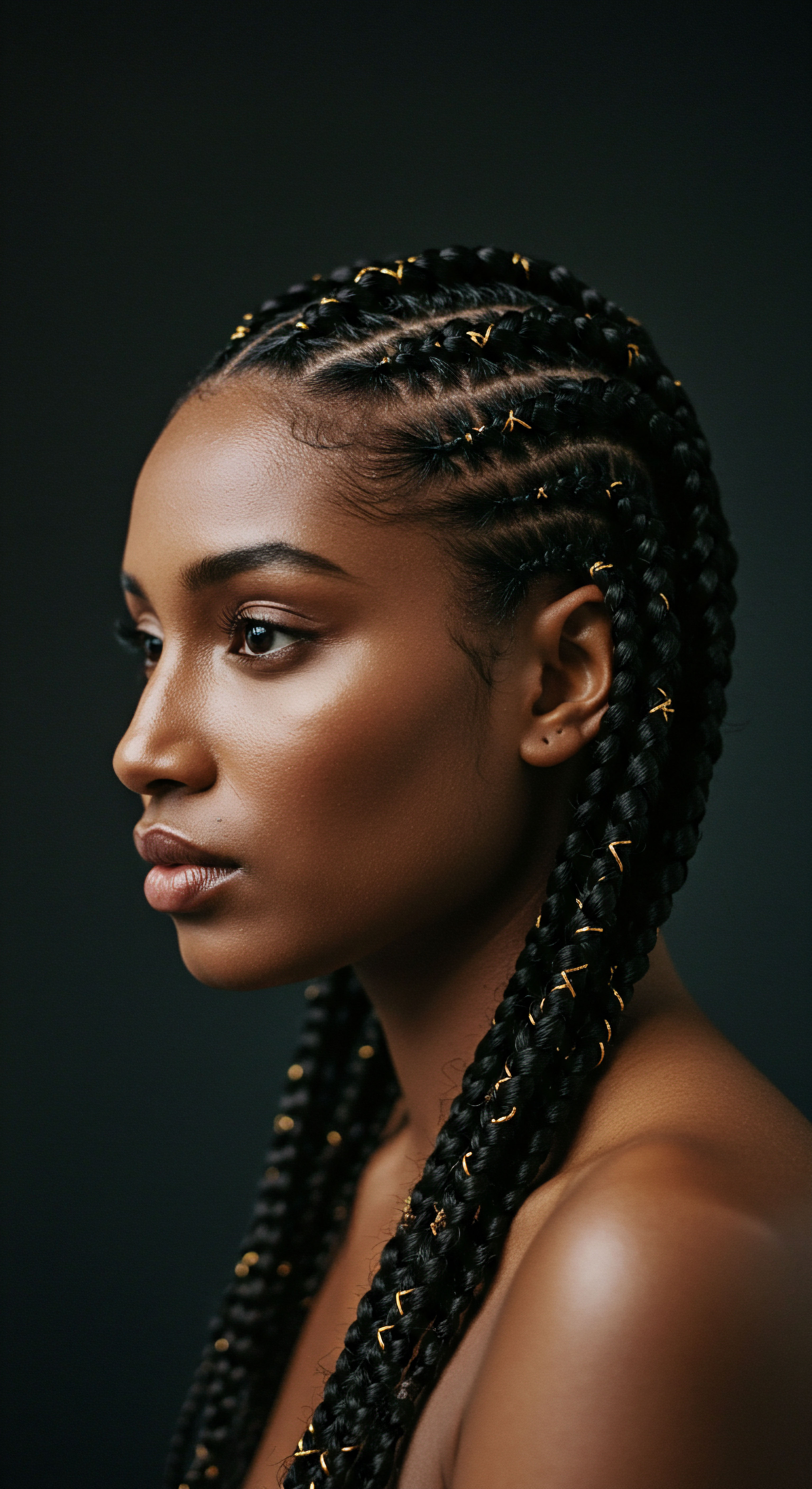
Reflection
As the night draws to a close and the first hints of dawn appear, the story of moisture balance in overnight hair care comes full circle. It is a narrative woven from the very fabric of our hair’s biology, the deliberate actions we take, and the subtle forces of our environment. To truly care for our textured strands is to honor their inherent thirst, to shield them from the silent aggressors of friction and dryness, and to provide them with a sanctuary of hydration as we rest. This attentiveness, a gentle practice imbued with both science and respect, ensures that each morning brings not just a new day, but renewed vibrancy and strength to the crown we carry.
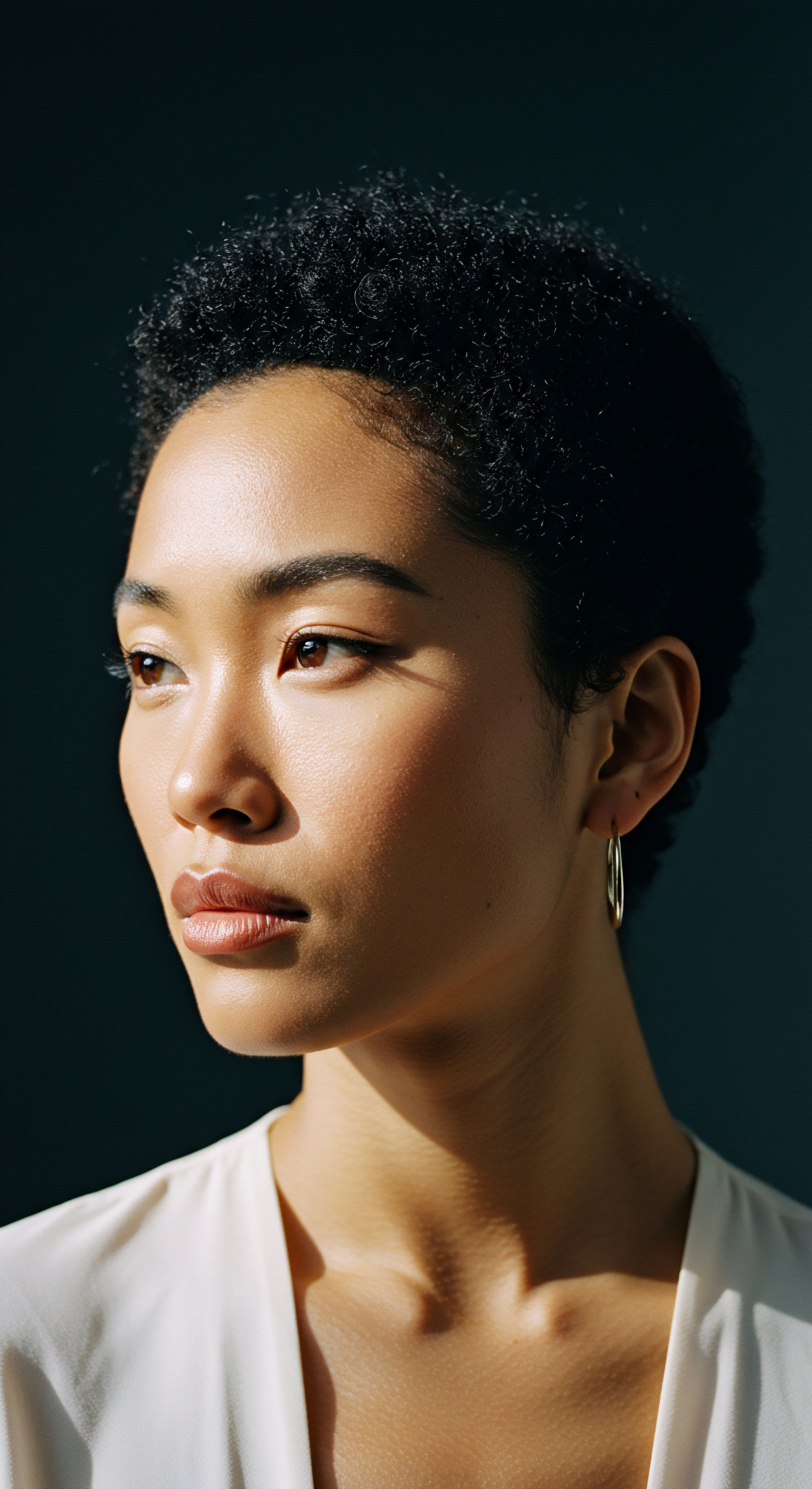
References
- 1. Kocher, K. R. & Bush, A. J. (2015). The tribology of human hair. Journal of Cosmetic Science, 66(4), 231-240.
- 2. Robbins, C. R. (2012). Chemical and Physical Behavior of Human Hair. Springer Science & Business Media.
- 3. Popescu, C. & Hoppel, M. (2009). Hair and Hair Care. Marcel Dekker.
- 4. Khumalo, N. P. & Gumedze, F. (2010). Hair practices in women of African descent. Journal of the American Academy of Dermatology, 62(5), 844-851.
- 5. Gavazzoni Dias, M. F. (2015). Hair cosmetics ❉ an overview. International Journal of Trichology, 7(1), 2-15.
- 6. Wolfram, L. J. & Wortmann, F. J. (2002). Hair ❉ Physical Properties. Marcel Dekker.
- 7. Trueb, R. M. (2016). Aging Hair. Springer.
- 8. Draelos, Z. D. (2011). Cosmetic Dermatology ❉ Products and Procedures. Wiley-Blackwell.